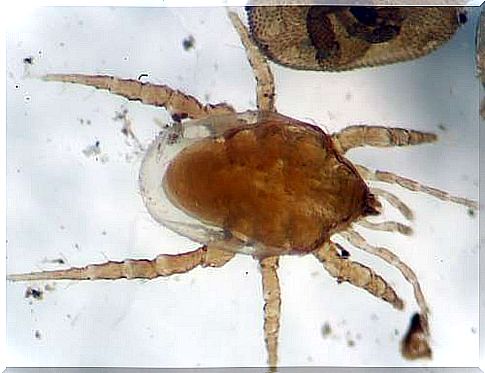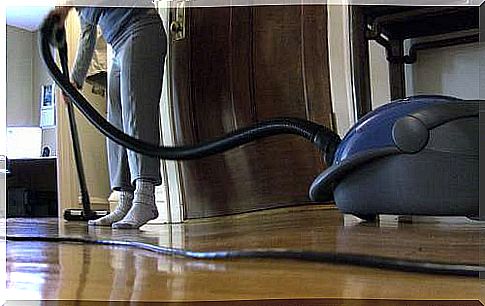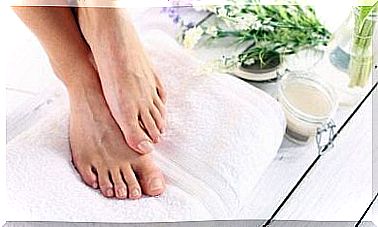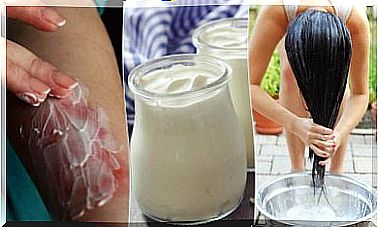Homemade Anti-mite Spray
In this post you will learn more about these tiny roommates and how you can make your own anti-mite spray to combat them.

House dust allergies are triggered by tiny microorganisms. Mites can cause runny nose, frequent sneezing, runny nose, itching in the nose or eyes and, in severe cases, asthma. Do you already have an anti-mite spray ?
In this post, you will learn more about these tiny roommates and how you can make your own anti-mite spray to combat them.
The mites are a subclass of arachnids and can be found practically anywhere in the house. We are surrounded not only by mites, but by numerous microorganisms.
They are not necessarily harmful. Most arachnids are harmless and invisible to the human eye.
However, as already mentioned, mites are responsible for numerous allergies and respiratory problems. In order to fight these vermin, it is important to learn a little more about them.

Where are the mites?
Mites are invisible because they are only about 0.3 mm in size. They feed on dead skin cells. The mites produce excretions that are responsible for the house dust allergy.
Each mite can excrete up to 20 harmful particles per day, which makes a total of 2000 excretions over a lifespan of 10 weeks. An average mattress can hold between 100,000 and 100 million mites.
The male mite lives for about 10 days, the female an average of 70 days. During this time they lay between 60 and 100 eggs. You can work out for yourself how quickly mites can spread.
Mites avoid the light and usually hide between textiles. For example, fabric folds on pillows, mattresses, carpets, and stuffed animals are perfect homes for these bugs. Mites in particular love a warm and humid atmosphere.
House dust allergy and health consequences
Mites cause 50% of allergies. Inhaling the feces can lead to respiratory diseases such as rhinitis. The nasal mucous membranes are attacked.
Itching, runny nose, nostrils and sometimes a bad sense of smell are also consequences. Dust mites can also cause asthma.
In addition, allergic conjunctivitis can occur, which manifests itself as itching, reddening of the eyes, tearing and an annoying feeling in the eyes.
Prolonged skin contact with mites can cause skin irritation or atopic eczema, which causes itching and inflammation.
Effective home remedies

In order to avoid the annoying symptoms of a house dust allergy, contact with the mites must be avoided.
Cleanliness is crucial and the best means. In addition, there are various home remedies that can be very helpful. You can easily take care of removing these annoying vermin yourself.
Anti-mite spray
A homemade anti-mite spray can fight harmful mites very efficiently. There are also various products for this in the trade. However, we recommend the following recipe:
- 1 spray can
- 1/2 cup of alcohol
- 1/2 cup of distilled water
- 30 drops of essential oil (lemon, eucalyptus, lavender, cypress, cinnamon, etc.)
Simply mix all the ingredients in the spray can and the anti-mite spray is ready. This is used to spray the bed, pillows and sheets, curtains or other places.
You should not use this spray in the presence of children under three years of age or pregnant women. After that, you should wait for the liquid to evaporate.
The first time you use this spray, the number of dust mites is significantly reduced for two months. To keep the house as free of mites as possible, the spray must be used regularly every two to three months.
Essential oils
Another very good remedy is the daily atomization of essential oils. For example eucalyptus, lavender, mint, pepper or pine. The scent of these oils is also very pleasant.
A mix of anise, clove, fennel, verbena, and lavender in a spray can also works great. This is also sprayed on bed, carpets, curtains, etc. to reduce the mite population. The room will smell wonderful and fresh afterwards.
Essential oils are highly concentrated and can cause skin irritation. Therefore, they should always be used in moderation. The application of the oils should be carried out by someone without allergies.

Prevention against house dust mites
As a precaution against dust mites, you should clean regularly. You should also take various additional measures. With this you can prevent the vermin from spreading. Here you can find various tips:
- Keep the room humidity below 50% if possible. One way to do this is to use a room air dehumidifier. You can measure the humidity with a hygrometer.
- Ventilate the rooms regularly. If you open the windows and there is a draft, fewer dust particles and mites can collect. 15 minutes a day is sufficient.
- Let the sun into the room. The mites do not spread as well in sunlight.
- You should wash bed linen and curtains over 60º to safely remove the mites.
cleaning
- Cleaning the mattress is also very important, as this is where the largest accumulation of dust mites can be found. Vacuum the mattress regularly to remove all dust particles and prevent mites from settling on the surface.
- In summer, it is advisable to put mattresses, blankets, pillows, etc. in the sun. Mites do not survive high temperatures. The cold in winter is also very helpful in eliminating the vermin.
- It is best to avoid carpets or other mite nests. Carpets are a perfect home for the mites. Especially if they are on a floor that retains moisture. If possible, you should replace carpets with tiles, wooden floors, etc. Even non-washable curtains, blinds, furniture or objects that are large dust catchers have no place in the bedroom of an allergy sufferer.
Dust mite removal is very easy. However, you need to do it regularly.
Particularly thorough cleaning is recommended in spring and autumn, as allergic symptoms occur more frequently at these times of the year.









